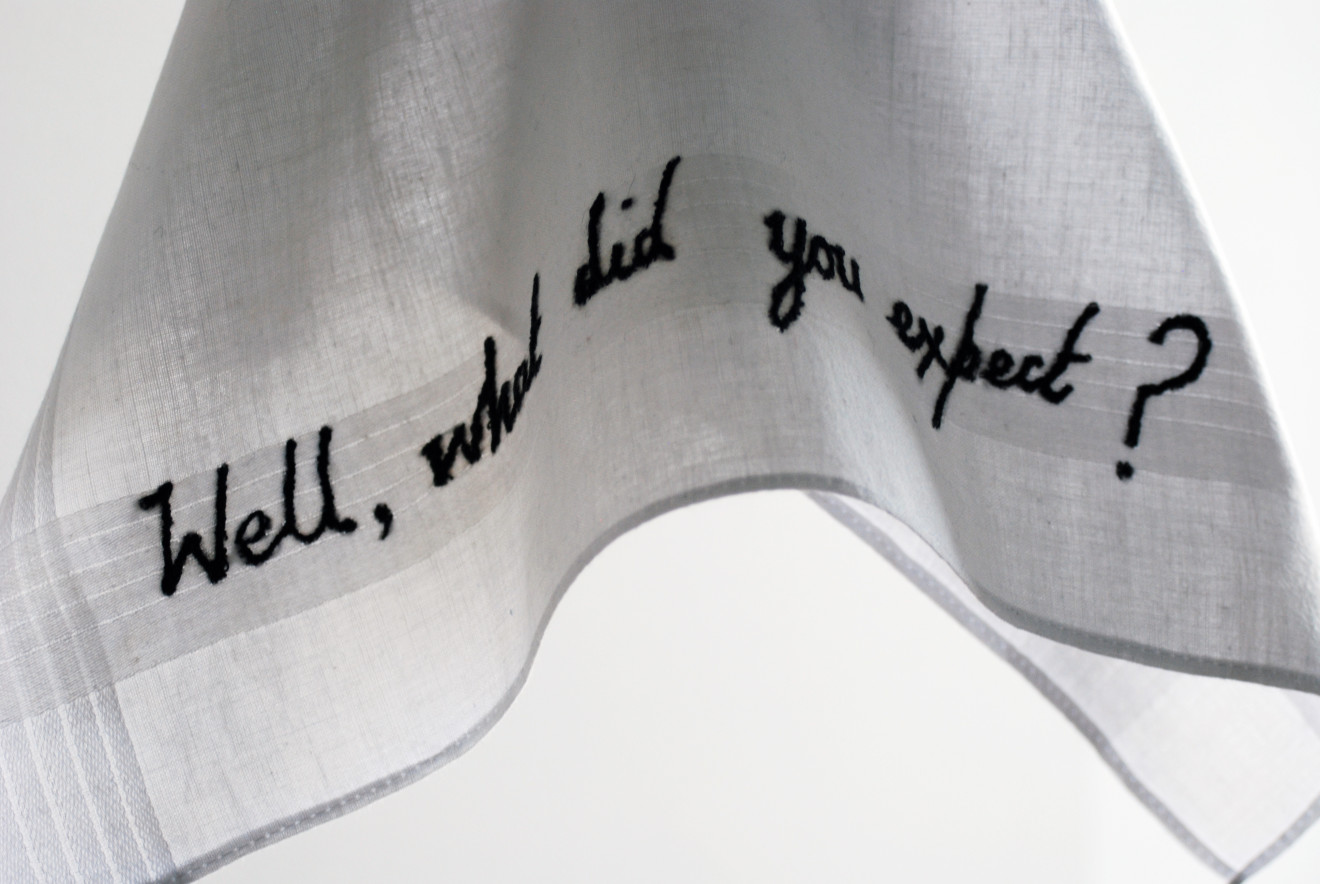Well, what did you Expect?, 2020
White cotton handkerchief, embroidered with black stitching thread and held in a wooden hand.
40 (h) x 30 (w) x 30 (d) cm
15 3/4 (h) x 11 3/4 (w) x 11 3/4 (d) in
15 3/4 (h) x 11 3/4 (w) x 11 3/4 (d) in
Copyright The Artist
Further images
A wooden hand holds a pure white handkerchief embroidered with the words 'Well, what did you expect?' The handkerchief is held in a position that denotes elements of surrender, comfort,...
A wooden hand holds a pure white handkerchief embroidered with the words 'Well, what did you expect?' The handkerchief is held in a position that denotes elements of surrender, comfort, and farewell.
The embroidery is visible, or partially visible, depending on how the handkerchief falls or the wind blows. Multiple meaningful but incomplete readings are revealed, as the text wraps around the folds before you see the full message. The fine black thread and a wooden hand grants the piece the countenance of the everyday, a natural intimacy.
Unlike the samplers that came before it, this is less about technique and more about ingraining an idea into the fabric. The piece both embraces and moves on from feminist sentiments, as laid out on the flat handkerchiefs of the likes of Louise Bougeois (I have been to Hell and back...) and the original ‘Suffragette Handkerchief’ (with sixty-six signatures and two sets of initials from the women held at Holloway prison for their part in the window smashing protest of March 1912). However, this piece also speaks to common narratives, when calling out behaviour and the internal voice of self-criticism.
The embroidery is visible, or partially visible, depending on how the handkerchief falls or the wind blows. Multiple meaningful but incomplete readings are revealed, as the text wraps around the folds before you see the full message. The fine black thread and a wooden hand grants the piece the countenance of the everyday, a natural intimacy.
Unlike the samplers that came before it, this is less about technique and more about ingraining an idea into the fabric. The piece both embraces and moves on from feminist sentiments, as laid out on the flat handkerchiefs of the likes of Louise Bougeois (I have been to Hell and back...) and the original ‘Suffragette Handkerchief’ (with sixty-six signatures and two sets of initials from the women held at Holloway prison for their part in the window smashing protest of March 1912). However, this piece also speaks to common narratives, when calling out behaviour and the internal voice of self-criticism.





